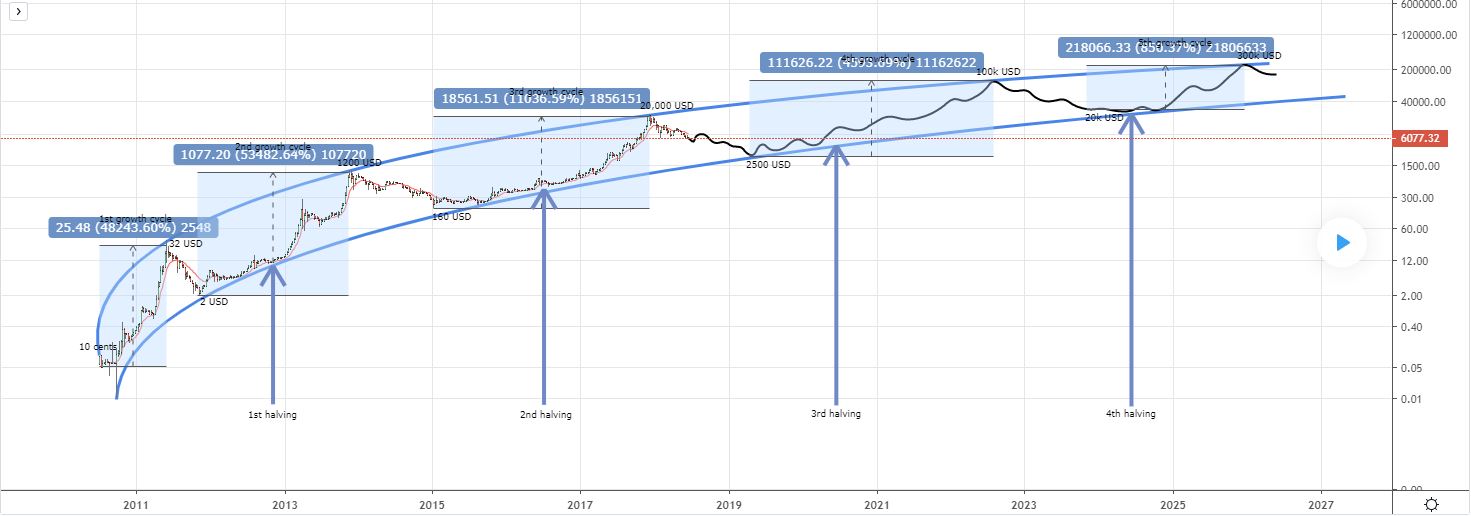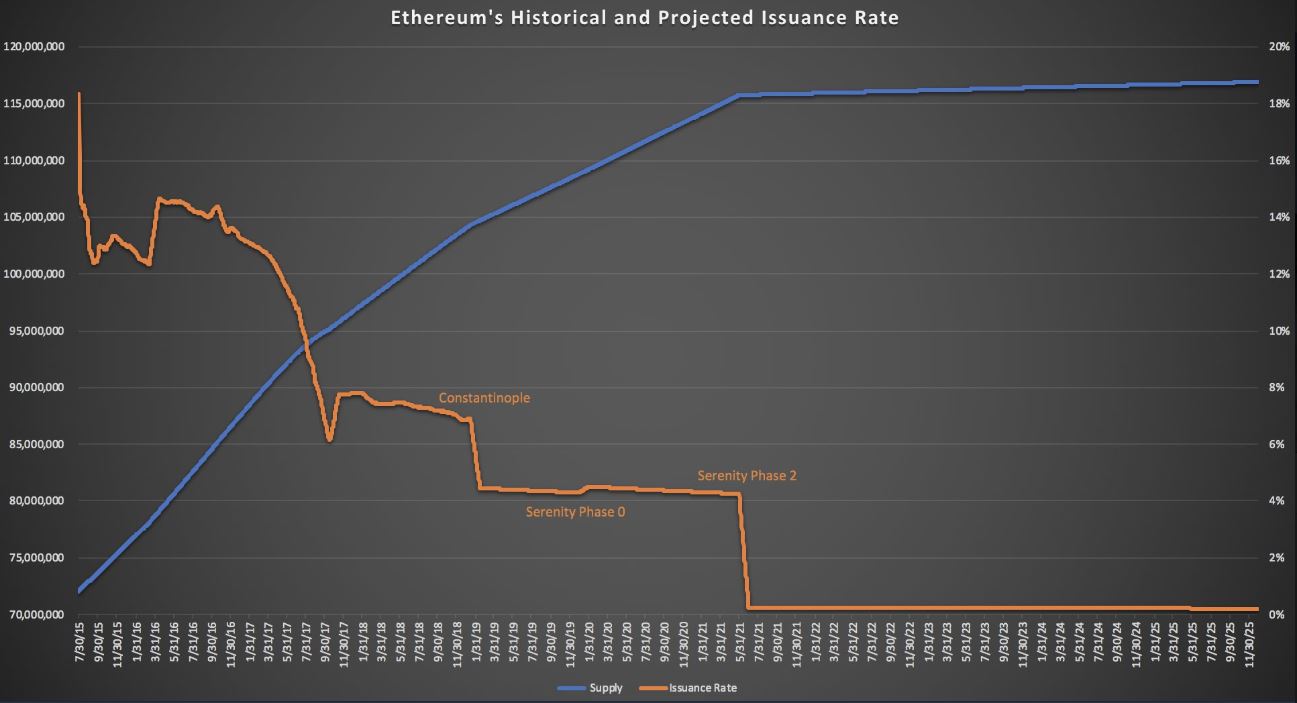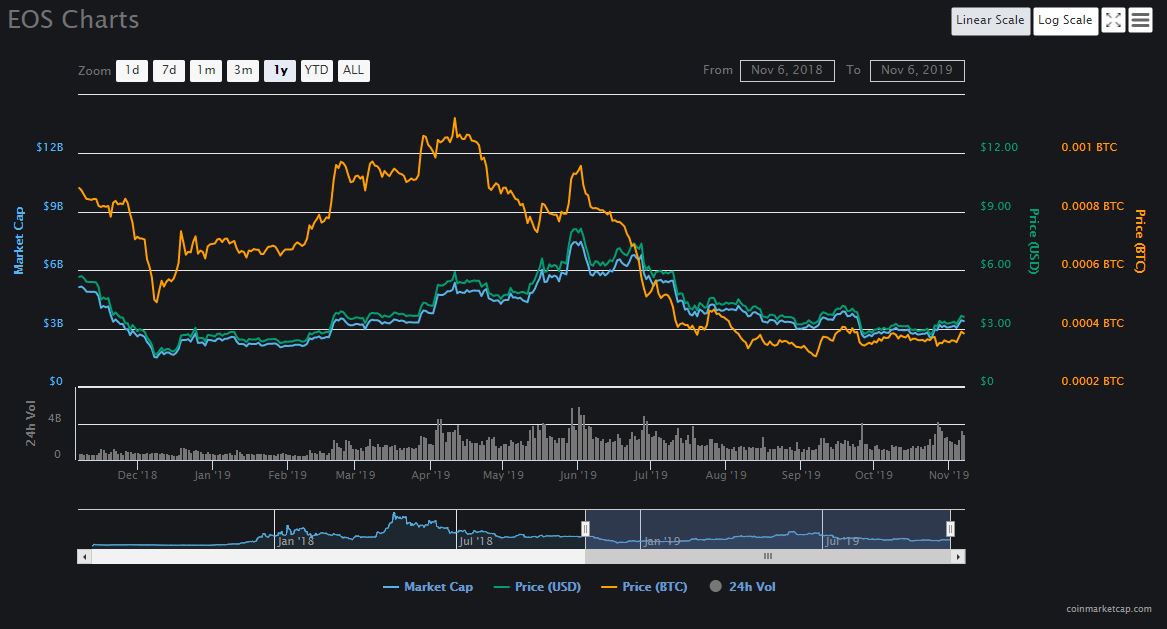With All Eyes On The Next Bitcoin Halving, Alt Supply Dynamics Are Being Overlooked
Are slowdowns in altcoin supply growth being overshadowed?

Share this article
There is a growing hype surrounding the upcoming Bitcoin halving, set to occur in May 2020, about 190 days away. What this means is widely known. Every four years, the amount of Bitcoin rewarded to block producers is cut in half, a feature hard-wired into the blockchain’s architecture.
Currently, around 1,800 new Bitcoins are produced daily, with miners being rewarded 12.5 BTC for each block mined. That is set to drop to 6.25 next year.
With lower rewards for miners, they will either stop mining or hold onto their BTC until a new price forms that compensates them for the cost involved in mining blocks. With supply and demand forces in place, the result is the creation of a new equilibrium price for Bitcoin–an increasingly scarce asset.
The Third Halving
This will be Bitcoin’s third halving event. The first, in November 2012, saw block rewards fall from 50 to 25 BTC. It had a dramatic impact on the price of BTC. The second, in July of 2016, triggered a year-and-a-half-long bull run that sent prices from around $650 to near $20k, which remains its all-time high.
Of course, many familiar with the cryptocurrency sector see the potential for gains before the halving event, and some stockpiling may well be going on now. Nevertheless, this historical price chart of Bitcoin clearly shows a run-up in prices both before and after each halving:

Bayern LB has applied the stock-to-flow ratio, often used in commodity analysis, to try to determine a price for Bitcoin after next May’s halving. A stock-to-flow ratio is simply the amount of a commodity in existence divided by the amount produced annually.
Gold’s ratio is 58. Bitcoin’s is currently 25.8. After the halving, that number increases to 53. Based on that model and examining past price behaviors surrounding halving events, they suggest that “If the May 2020 stock-to-flow ratio for Bitcoin is factored into the model, a vertiginous price of around USD 90,000 emerges. This would imply that the forthcoming halving effect has hardly been priced into the current Bitcoin price.”
But Bitcoin does not have a monopoly on slower supply growth.
Supply Contractions Hitting A Number Of Altcoins
The new supply of a range of altcoins is also set to drop in 2020-21, with a number already having done so this year. Among many significant coins, there is a precipitous drop in the stock-to-flow ratio from this year and into the next. If demand stays constant, their prices should rise. Is it time to stock up?
Ether ETH
Ethereum does not have a hard cap on supply like Bitcoin, but after the Constantinople hard fork was finally implemented on February 28th, block rewards were cut from three to two. That resulted in a theoretical fall of 33 percent of new annual ETH supply, with around 4.5 percent new issuances of Ether annually.
In 2021, the growth of Ether supply is expected to plunge a further 75 percent, as Serenity is rolled out. Serenity upgrades will introduce sharding, Proof of Stake, and a number of other upgrades to the network. It is set to occur over three phases, and once phase 3 is reached, new issuance (and therefore, total supply) flatlines.

XRP
To switch to a “more conservative volume benchmark” for XRP, Ripple Labs substantially reduced its sell-off of the token in Q3 this year, and that is set to intensify. In Q3, according to the company, its XRP sales were worth around $66.24 million, a dramatic shift downward from Q2 sales worth $251.51 million. That’s an almost 70 percent drop.
That trend appears set to continue into Q4 and next year. Ripple states unequivocally that “Looking ahead to Q4, we will continue to monitor volume developments closely and intend to maintain a similar approach to Ripple’s XRP sales as compared with Q3.” Having said that, the price of XRP failed to respond positively to the reduction in Ripple’s token sales.
Bitcoin Cash BCH
According to Coingecko, the Bitcoin Cash halving is 153 days away. Bitcoin Cash’s halving process follows that of Bitcoin’s, with rewards per block halving from 12.5 to 6.25 BCH.
Bitcoin Cash however lacks the historic data to suggest that its price would be significantly affected by the halving. Nevertheless, from a structural point of view, the doubling of its stock-to-flow ratio will at least place supply-side pressure on Bitcoin Cash price.
Block.one’s EOS
In early June, the EOS community voted in favor of a proposal to reduce the ‘inflation rate’ – the annual rate of new issuances of EOS tokens, from five to one percent. Block producer rewards remained unchanged at 0.25%+0.75%, meaning the excess four percent filtering into the eosio.saving account disappeared. The rationale was that as of March 5th, “the eosio.saving account has [sic] a token balance in excess of 28.75 million EOS ($108 million)” and growing daily.
EOS enjoyed a momentary price bump around the time, hitting highs for the year. According to Coinmarketcap data, however, the joy was short-lived, and EOS has been declining in price ever since.

Monero XMR
Monero’s inflation rate is designed to fall at a faster rate than Bitcoin’s. Block rewards for XMR sunk beneath those of Bitcoin for the first time this year, and in August, daily supply growth descended beneath Bitcoin’s benchmark.
Monero’s inflation rate began 2019 at 4.1 percent, dropping toward an expected 2.39 percent by early 2020. That makes 2020 a big year for XMR, with a stock-to-flow ratio finally catching up to, and exceeding that of Bitcoin. According to Bitwise analysis, new annual issuances of Monero will have fallen by 41 percent by next year.
Dash
Dash has a more frequent ‘coin emission’ rate. While Bitcoin’s reduction is cut in half every four years, Dash reduces issuances by 7.14 percent approximately every 383 days, (a little over a year). Block rewards are lowered more frequently and more gently, making the supply reductions more subtle and more constant.
With an uncertain maximum total supply, new Dash supply is set to continue for 192 years until it takes a full year to mine a single Dash. Once it hits the year 2209, only 14 more Dash can be created, with the final one taking 231 years.
The elegant complexity of its supply model aside, Dash supply growth is set to fall by around seven percent every year or so, placing continued upward price pressure on it, ceteris paribus.
Key Takeaways
The Litecoin halving of 2019 saw ‘buy the rumor, sell the news’ qualities, with prices rising from $20 at the start of the year to $140 by August. But there was no post-halving bounce and the bullish price activity leading up to it could have been explained by renewed bullish sentiment for Bitcoin.
The crypto markets may have matured significantly since Bitcoin’s last halving, but as May 2020 approaches, all bets are off. Whether by community consensus or by algorithmic design, all of these major altcoins, like Bitcoin, are undergoing seismic changes in supply properties from 2019 to 2021.
The digital assets that underwent changes in supply-side tokenomics this year may enjoy lagging price gains when the Bitcoin halving drags crypto into some serious spotlight. It might be time to stock up. As Bayern LB asserts, the halving has yet to be baked into the price in anticipation.
Share this article
